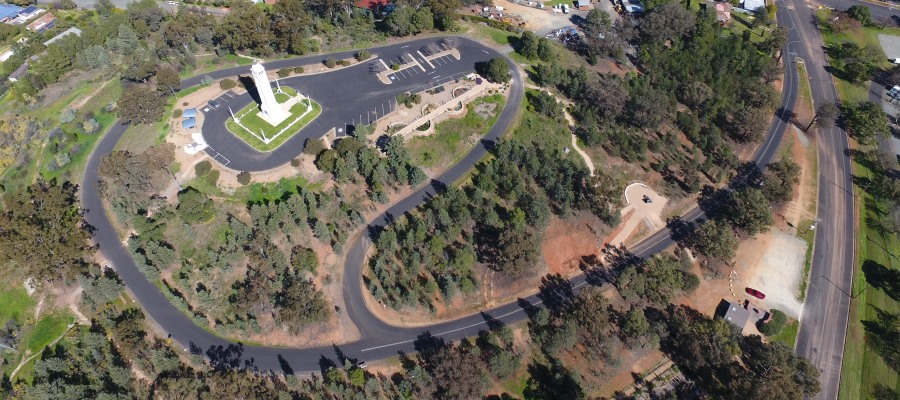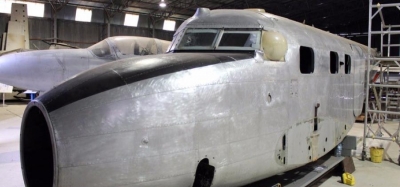Memorial Hill & Rotary Peace Precinct
Reflect, remember and take in the view
Memorial Hill – Parkes’ Iconic Landmark
Standing proudly at the end of Bushman Street, Memorial Hill is Parkes’ most prominent and revered landmark. Crowned by the 33-metre-high Shrine of Remembrance, it offers sweeping views across the town and surrounding farmlands, a perfect spot for reflection, photography or a quiet picnic.
Construction of the memorial began in the 1920s, originally to honour those who served in World War I. Over time, it has grown to recognise the sacrifices made during World War II, the Korean War, Vietnam War and other conflicts involving Australian service members. Today, it remains a powerful symbol of remembrance and respect, drawing locals and visitors alike.
Visitors can enjoy a peaceful bushwalk around the monument, unwind in Rotary Park with a picnic, or let the kids explore the adventure playground located on the northern side of the hill. The site also features the beautifully designed Remembrance Walk and Theatres of War Gardens, which symbolise global conflict regions where Australians have served, and include an honour roll commemorating local soldiers laid to rest abroad.
Vehicle access to the summit is open during daylight hours, while pedestrian access is available at any time.
Overview of the history of the monument and Parkes' involvement in war.
Check out this birds-eye view of Memorial Hill.
Rotary Peace Precinct – A Walk of Reflection and Reconciliation
On the lower side of Memorial Hill, you'll find the Rotary Peace Precinct, a space for visitors to pause, reflect and engage with themes of peace, reconciliation and respect. Set along a quiet walking trail, the precinct features five striking timber dendroglyphs – carved sculptures that blend natural artistry with deep cultural meaning.
Each dendroglyph is etched with Wiradjuri iconography and represents a theme:
- Peace, Respect and Valuing Diversity
- Acknowledging the Past
- Strong Families, Strong Community
- Yindyamarra Winhanganha – a Wiradjuri expression meaning “respect and learning through listening and thinking”
- Reconciliation and Unity
The first two dendroglyphs also feature metal artworks and the Wiradjuri word for peace, Gulbalanha. These sculptural pieces encourage contemplation of values such as cultural diversity, freedom of expression, non-violence, and the importance of community connection.
Together, Memorial Hill and the Rotary Peace Precinct create a meaningful destination in Parkes – a place to honour the past and reflect on the shared path toward peace.


















